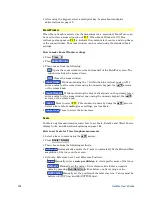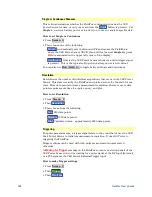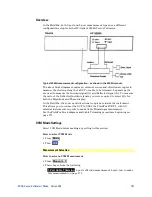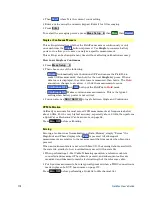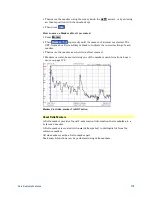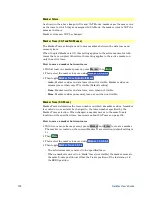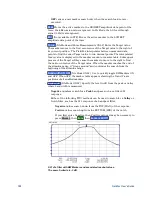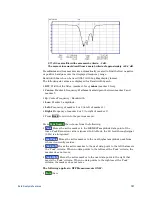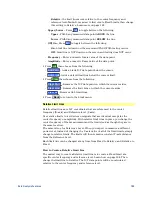
170
FieldFox User’s Guide
Then
Avg N
where
N
is the current count setting.
Enter a value using the numeric keypad. Enter
1
for NO averaging.
Press
Enter
.
To restart the averaging process, press
Meas Setup 4
, then
More
, then
Restart
Single or Continuous Measure
This setting determines whether the FieldFox measures continuously or only
once each time the
Single
button is pressed. Use
Single
to conserve battery
power or to allow you to save or analyze a specific measurement.
This setting can be changed at any time without affecting calibration accuracy.
How to set Single or Continuous
Press
Meas Setup 4
Then choose one of the following:
o
Single
Automatically sets Continuous OFF and causes the FieldFox to
make ONE measurement, then hold for the next
Single
key press. When a
data trace is displayed, the entire trace is measured, then holds. The
Hold
annotation changes to an arrow
-->
while the measurement occurs.
o
Continuous OFF
and
Hold
both put the FieldFox in
Hold
mode.
o
Continuous ON
Makes continuous measurements. This is the typical
setting when battery power is not critical.
You can also use
Run / Hold +/-
to toggle between Single and Continuous.
VVM Calibration
CalReady is accurate for most zeroed VVM measurements at frequencies below
about 6 GHz. For the very highest accuracy, especially above 6 GHz, then perform
a QuickCal or Mechanical Cal. Learn more on page 64.
Press
Zero OFF
before calibrating.
Zeroing
Zeroing, also known as Normalization, or Data/Memory, simply “Zeroes” the
Magnitude and Phase display when
Zero
is pressed. All subsequent
measurements are relative to the measurement that was made when Zero was
pressed.
When an instrument state is saved with Zero ON, the zeroing data is saved with
the state file, similar to how a calibration is saved with a state file.
When performing a 1-Port Cable Trimming operation, a reference cable is
connected and measured. Then Zero is pressed, and subsequent cables are
measured and trimmed to match electrical length of the reference cable.
For 2-port measurements, Zero is typically pressed when a THRU connection is
made in place of a DUT. Learn more on page 172.
Press
Zero OFF
before performing a QuickCal or Mechanical Cal.



